BlueAnt Q3 Review

Introduction:
Unlike smartphones, Bluetooth headsets rarely see successors, but when they do, the time between releases is usually lengthy. For veteran Bluetooth accessory maker BlueAnt, they’ve finally brought to market its BlueAnt Q3 Bluetooth headset – a good two years after the release of its previous effort in the Q2. Being a successive headset and all, it’s seeing many new hardware tech, such as wideband audio voice control and Siri/Google Voice actions integration, to give it enough separation from its predecessor. Even with all the mumbo jumbo, let’s just hope it’ll get the job done where it matters the most!
Design & Comfort:
You’d think that they would somehow change up the design for this third installment, but that’s not the case whatsoever, as the BlueAnt Q3 looks almost identical to its predecessor. Visually, it’s a bummer to see nothing terribly new, but despite that, there’s that business-like element to its design. Even though it’s constructed out of plastic, this gives it a clean look and light weight feel – while the metallic strips along its façade help to sprinkle a hint of premium to the headset. As a whole, it’s not the most compelling headset design we’ve seen, but we suppose they didn’t want to mess around with the recipe from beforehand.
During prolonged wearing, we didn’t find the BlueAnt Q3 too irritating in the ear, but we’d recommend using the ear hook seeing that it feels a bit loose without it. In fact, even using the appropriate sized ear bud, it still felt loose enough to fall out of our ear with some abrupt head movements. Just like its contemporaries, the shape of the ear bud is fashioned in a way that it channels the audio from the headset into a narrow area – so yeah, it looks intimidating at first, but it’s relatively flexible.
Taking up the majority of space on its façade is the meshed grill that’s used to reduce wind noise, which also hides away its two microphones – one is on the tip of the Q3, while the other is positioned on the opposite end. Nearby as well, are the multi-function command button, LED notification light, volume toggle, and microUSB port to charge its internal battery. Strangely, pushing the volume control toggle up actually decreases the volume, as opposed to increasing it, but then again, we’re quickly able to adjust. On the inside section of the Q3, there’s a single switch that easily turns the headset on/off.
Software Features:
Touted as being stuffed with an arsenal of software features, they’re not something that takes the functionality of a Bluetooth headset to new heights. Rather, it’s more of the same as it meets the same standard we’ve come to expect with headsets as a whole in this day and age. For starters, the BlueAnt Q3 features voice control that can execute commands, such as telling us how much battery life is left, and being to answer/reject phone calls by simply speaking “answer” or “ignore.” Thankfully, they’ve incorporated support for Siri & Google Voice, so we can use the respective services by simply pressing on the command button. For those wielding Android 2.1+ smartphones, they’re treated to the BlueAnt app, which merely reads back received text messages.
So what can we say about these so-called “premium” software features? Honestly, they’re far from being regarded as premium, especially when many entry-level headsets offer similar functionality. By now, it’s all becoming all too standard amongst the crop within the $100 price point range. Moreover, knowing that today’s smartphones feature expansive voice services, it doesn’t make it any better for the Q3 when it merely bridges the connection to those services with its own offering.
Unlike smartphones, Bluetooth headsets rarely see successors, but when they do, the time between releases is usually lengthy. For veteran Bluetooth accessory maker BlueAnt, they’ve finally brought to market its BlueAnt Q3 Bluetooth headset – a good two years after the release of its previous effort in the Q2. Being a successive headset and all, it’s seeing many new hardware tech, such as wideband audio voice control and Siri/Google Voice actions integration, to give it enough separation from its predecessor. Even with all the mumbo jumbo, let’s just hope it’ll get the job done where it matters the most!
Design & Comfort:
You’d think that they would somehow change up the design for this third installment, but that’s not the case whatsoever, as the BlueAnt Q3 looks almost identical to its predecessor. Visually, it’s a bummer to see nothing terribly new, but despite that, there’s that business-like element to its design. Even though it’s constructed out of plastic, this gives it a clean look and light weight feel – while the metallic strips along its façade help to sprinkle a hint of premium to the headset. As a whole, it’s not the most compelling headset design we’ve seen, but we suppose they didn’t want to mess around with the recipe from beforehand.
During prolonged wearing, we didn’t find the BlueAnt Q3 too irritating in the ear, but we’d recommend using the ear hook seeing that it feels a bit loose without it. In fact, even using the appropriate sized ear bud, it still felt loose enough to fall out of our ear with some abrupt head movements. Just like its contemporaries, the shape of the ear bud is fashioned in a way that it channels the audio from the headset into a narrow area – so yeah, it looks intimidating at first, but it’s relatively flexible.
Taking up the majority of space on its façade is the meshed grill that’s used to reduce wind noise, which also hides away its two microphones – one is on the tip of the Q3, while the other is positioned on the opposite end. Nearby as well, are the multi-function command button, LED notification light, volume toggle, and microUSB port to charge its internal battery. Strangely, pushing the volume control toggle up actually decreases the volume, as opposed to increasing it, but then again, we’re quickly able to adjust. On the inside section of the Q3, there’s a single switch that easily turns the headset on/off.
Software Features:
Touted as being stuffed with an arsenal of software features, they’re not something that takes the functionality of a Bluetooth headset to new heights. Rather, it’s more of the same as it meets the same standard we’ve come to expect with headsets as a whole in this day and age. For starters, the BlueAnt Q3 features voice control that can execute commands, such as telling us how much battery life is left, and being to answer/reject phone calls by simply speaking “answer” or “ignore.” Thankfully, they’ve incorporated support for Siri & Google Voice, so we can use the respective services by simply pressing on the command button. For those wielding Android 2.1+ smartphones, they’re treated to the BlueAnt app, which merely reads back received text messages.
So what can we say about these so-called “premium” software features? Honestly, they’re far from being regarded as premium, especially when many entry-level headsets offer similar functionality. By now, it’s all becoming all too standard amongst the crop within the $100 price point range. Moreover, knowing that today’s smartphones feature expansive voice services, it doesn’t make it any better for the Q3 when it merely bridges the connection to those services with its own offering.
Audio & Call Quality:
Don’t hold your breath on banking something fantastic with the audio quality out of this one, as it barely delivers anything astounding to make it a standout hit amongst other Bluetooth headsets. When it comes to purely music playback, its quality is mostly flat and lacks that extra level of pop with its tone. At the loudest volume setting, there’s no arguing how audible it is to the ear, but its quality definitely sounds a bit strained – enough to make it unpleasant.
Getting more of the same, there isn’t a great deal of improvement in the calling quality department, but in the greater scheme of things, the overall result is underwhelming to say the least. First and foremost, we’re able to hear our callers through the BlueAnt Q3 without much disturbance, since its strong volume output is its single saving grace. Even though voices through the headset are distinctive enough to comprehend, it still sounds artificial more than anything else. Conversely, on the other end of the line, our callers mention being greeted with muffled voices, which doesn’t aid in its cause when the noise cancellation feature of the Q3 is inconsistent. Indeed, it works to cut out wind noise, but as for background noise, it barely kicks in on a consistent basis to mute them.
Battery:
Rated for 7 hours of talk time by the manufacturer, our results came close to hitting the mark, but it actually inched at a little over 6 hours and 45 minutes from a full charge. Luckily, the Q3 features rapid charging, which allows it to reach 50 percent capacity from a charge time of only 30 minutes.
Conclusion:
Tagged as a “premium smartphone earpiece,” the BlueAnt Q3 is the furthest thing from being in the same class as other premium Bluetooth headsets. From its bland design, to the barely-there software features associated with its compatible app, there’s nothing terribly grand at $100 a pop to give the Q3 the crown in this category. In actuality, it’s more like a mid-ranger than anything else, so you’re better off investing your money on something else entirely. Nowadays, it’s undeniably tough to stand out prolifically in the Bluetooth headset arena, but when the Q3 chooses to stay complacent, as opposed to being innovative, it’s going to be overlooked by consumers who are hungry for something fresh.
BlueAnt Q3 Video Review:

Don’t hold your breath on banking something fantastic with the audio quality out of this one, as it barely delivers anything astounding to make it a standout hit amongst other Bluetooth headsets. When it comes to purely music playback, its quality is mostly flat and lacks that extra level of pop with its tone. At the loudest volume setting, there’s no arguing how audible it is to the ear, but its quality definitely sounds a bit strained – enough to make it unpleasant.
Getting more of the same, there isn’t a great deal of improvement in the calling quality department, but in the greater scheme of things, the overall result is underwhelming to say the least. First and foremost, we’re able to hear our callers through the BlueAnt Q3 without much disturbance, since its strong volume output is its single saving grace. Even though voices through the headset are distinctive enough to comprehend, it still sounds artificial more than anything else. Conversely, on the other end of the line, our callers mention being greeted with muffled voices, which doesn’t aid in its cause when the noise cancellation feature of the Q3 is inconsistent. Indeed, it works to cut out wind noise, but as for background noise, it barely kicks in on a consistent basis to mute them.
Battery:
Rated for 7 hours of talk time by the manufacturer, our results came close to hitting the mark, but it actually inched at a little over 6 hours and 45 minutes from a full charge. Luckily, the Q3 features rapid charging, which allows it to reach 50 percent capacity from a charge time of only 30 minutes.
Conclusion:
Tagged as a “premium smartphone earpiece,” the BlueAnt Q3 is the furthest thing from being in the same class as other premium Bluetooth headsets. From its bland design, to the barely-there software features associated with its compatible app, there’s nothing terribly grand at $100 a pop to give the Q3 the crown in this category. In actuality, it’s more like a mid-ranger than anything else, so you’re better off investing your money on something else entirely. Nowadays, it’s undeniably tough to stand out prolifically in the Bluetooth headset arena, but when the Q3 chooses to stay complacent, as opposed to being innovative, it’s going to be overlooked by consumers who are hungry for something fresh.
BlueAnt Q3 Video Review:

Follow us on Google News


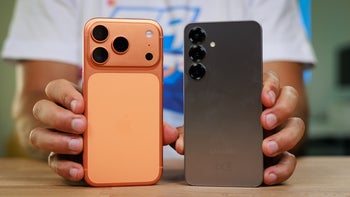

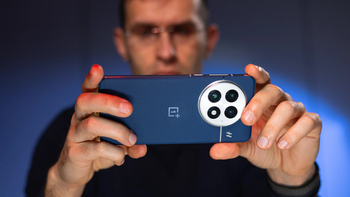
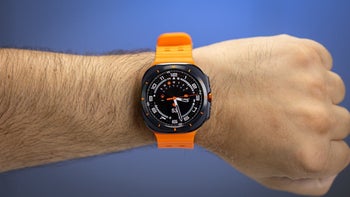
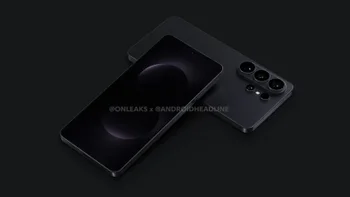



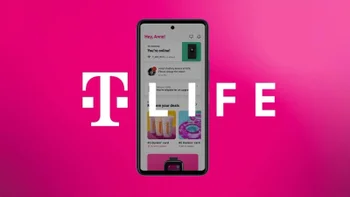


Things that are NOT allowed:
To help keep our community safe and free from spam, we apply temporary limits to newly created accounts: